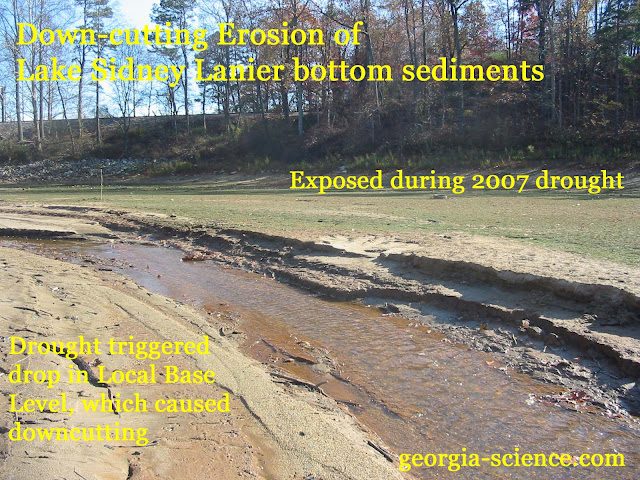[Back to our regularly-scheduled program. As referenced here, Stratigraphy is the study of layered rocks.]
Monument Valley, which straddles the AZ/UT border, is one of those places on my Top-10 Want-to-Visit List (which will be the subject of a later post).

In the course of my classes, whether they be Environmental Science or Geology, I remind my students that in the future, if they do a little "homework" before traveling, they will enjoy the trip more. Especially if they have kids to entertain.

To a non-scientist, it might seem that thinking about the geology might distract from the enjoyment of the natural and stark beauty, but to me it doesn't. To me, visualizing about "what it used to look like" at various points in geologic history adds to the wonder. To address the subject of the first photo (actually all three slides were taken by my Dad in 1980), the mesas, buttes, and most of the spires of Monument Valley are remnants of a formerly-continuous sheet of Permian and Triassic sedimentary rocks. The millions of years of weathering and erosion have brought forth the wonderous landforms we see, not only in Monument Valley, but elsewhere in the Colorado Plateau.
The four formations shown in the second photo are but a small portion of the "Colorado Plateau Stratigraphic Section", i.e., all of the layered rocks that occur within the defined area of the Colorado Plateau. [This
USGS webpage lists
all of the geologic units that occur within the Colorado Plateau, some of which only occur at the margins and extend into adjacent regions. This
USGS webpage lists all of the National Parks and such that are present within the Colorado Plateau (and the Colorado River Basin). Monument Valley itself is not administered by the National Park Service.] A simple geographic definition of the Colorado Plateau, which covers 50,000 square miles, is presented
here by Encarta. The Moenkopi and Organ Rock Formations are present to the north at Canyonlands National Park, while the de Chelly Sandstone is present to the south at Canyon de Chelly National Park. The Permian de Chelly Sandstone is derived from eolian sand-dune deposits. At Canyonlands, the White Rim Sandstone lies between the Moenkopi and the Organ Rock, thus making it the "Stratigraphic Equivalent" of the de Chelly, though the environment of deposition was different, suggested to be nearshore sand dunes for the White Rim.
In arid climates, topographic slopes are often defined by their underlying rock types in ways that are different from humid climates. The contrast between arid-climate "slope formers" and "cliff formers" is illustrated by the mesa (I think it is Sentinel Mesa) in the second photo. In arid climates, shales are "slope formers", while sandstones and limestones are "cliff formers". Alternating shales and sandstones/limestones produces a "stair-step effect", with the slope angle related to the percentage of shale vs. the other two rock types.
[I can give a more detailed description of why limestones behave differently in the contrasting climates, but that would take up more space.]

The third photo is of Agathla Peak, which is different from the other landforms in Monument Valley. It is an eroded "volcano neck", i.e., the central spire represents solidified magma within and/or below the original volcano. It is more resistant to erosion than the slope material that made up the flanks of the volcano. The volcano neck can also be referred to as a "feeder pipe". Shiprock is another good example of this type of landform. Agathla Peak is some 1,500 feet higher than the surrounding plateau.
[Additional info may be added later.]
 Part of being a scientist is about being observant of one's surroundings, so from time-to-time I may include things out of the realm of geology.
Part of being a scientist is about being observant of one's surroundings, so from time-to-time I may include things out of the realm of geology.





















